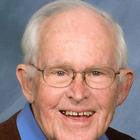James Minetree, soldier at D-Day, dead at 93
Published 10:52 am Wednesday, January 20, 2016
FRANKLIN
A local member of America’s Greatest Generation has passed on — one who served at a crucial turning point in World War II.
James Allen Minetree Jr. died on Saturday, Jan. 15, 2016. After performing his duties in North Africa and Sicily, he was sent to England and became part of the 16th Infantry Regiment of the First Division. Those men, along with the 116th Regiment of the 29th Division and certain Ranger elements, were on the first wave to land on Omaha Beach in Normandy, France, on June 6, 1944.
Minetree was wounded during the invasion, and later awarded the Silver Star with Oak Leaf Cluster and the Purple Heart with two Oak Leaf Clusters, along with the European, African, Middle Eastern Theater Campaign Ribbon with four Bronze Stars.
According to both his daughters, Ann Shuler and Lucy Wallace, their father didn’t speak of his time overseas, although the former added that he did once write his memoir, which included details.
“He never talked about it until the 50th anniversary of D-Day,” Shuler said. “The Greatest Generation was silent about the things they did.”
But during the bus tour to the memorial program in Bedford, veterans were asked what they did, and Minetree spoke up.
Shuler recalled that he talked mainly about a commanding officer, Lt. Jimmy Montieth, who died in battle and was posthumously awarded a gold cross.
“Daddy said, “He, as we all, were doing our duty and following orders.”
Wallace said, “We were lucky Daddy came home. We’re just extraordinarily proud of him. He was very unassuming about it.”
Schuler also said about their father, “I remember him never saying a mean thing about anybody in my whole life of knowing him He was just a lovely person. He was always nice to people, no matter what. Along with my mother, one of the most gracious people I’ve ever met. He was always quiet about the things he did.
“When my sister and I were growing up, He would take us to the Dismal Swamp, where he did tours when he worked for Union Camp. That was some of the best times.”
Other details of his life and funeral arrangements can be found on page A2.






